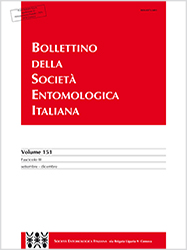Global economic trade and climate change influence stinging social wasp distribution and appropriate venom immunotherapy
All claims expressed in this article are solely those of the authors and do not necessarily represent those of their affiliated organizations, or those of the publisher, the editors and the reviewers. Any product that may be evaluated in this article or claim that may be made by its manufacturer is not guaranteed or endorsed by the publisher.
Autori
Social wasps (Hymenoptera: Vespidae) constitute an important group of predatory insects that are particularly well-suited for transportation beyond their native habitats into new environments through commercial trade, a phenomenon that is strongly influenced by climate change. As they are predominantly predators dominating numerous natural food chains of insects, these alien species can exert serious and devastating impacts on the native entomological fauna of the new habitats they invade. Additionally, because species belonging to the subfamilies Polistinae and Vespinae possess potent stings for defending their colonies, invasive social wasps represent a public health concern due to the wide range of allergic reactions they can elicit in humans. In this paper, we review the principal invasions of social wasps into novel habitats around the world and highlight the need for efficient immunotherapies to address the allergological risks posed by alien species. We detail the recent invasion of the Asian Vespa velutina nigrithorax in Europe, where the native Vespa crabro is found, as well as the increasing presence of Vespa orientalis in northern Tuscany, Italy. We discuss the optimal immunotherapy required in cases of human stinging incidents and describe how this relates to the phylogenetic distance between the three species.
Come citare

Questo volume è pubblicato con la licenza Creative Commons Attribuzione - Non commerciale 4.0 Internazionale.






